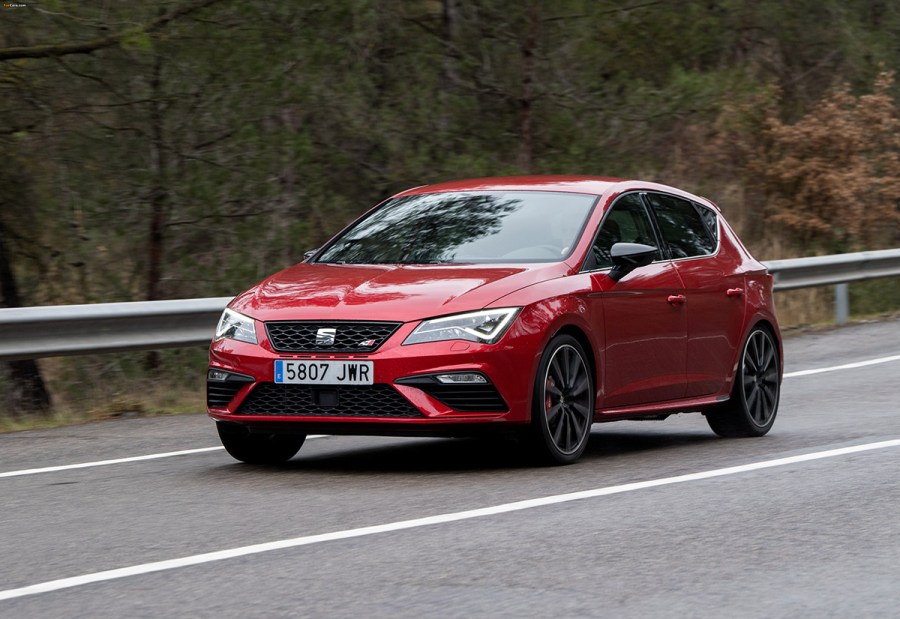Explore the ultimate family sleeper car: Here’s everything you need to know about the Seat Leon Cupra Mk3 in our comprehensive buying guide.
It might not look like it from the outside but the Leon Cupra delivers all the hot hatch vibes. Given it’s closely related to the Mk7 Golf GTI it’s a great pick. This Leon Cupra generation debuted in 2014 with a more angular look than the previous version which featured lots of rounded edges and eye-shaped headlights. The Mk3 version has a meaner edge that lends itself to aero body kits and loud wheels but we’ll get to that later.
In 2017 the model was facelifted so cars from then on are sometimes referred to as Mk3.5 versions but mostly this just includes some uprated tech features inside. Available as three-door, five-door and estate versions, alongside differing power levels, the Leon Cupra had plenty of configurations.
The fourth-generation was launched in 2020 so there’s a good six year period of tricked-up Leon Cupras to choose from in what is arguably the most attractive iteration of the model.
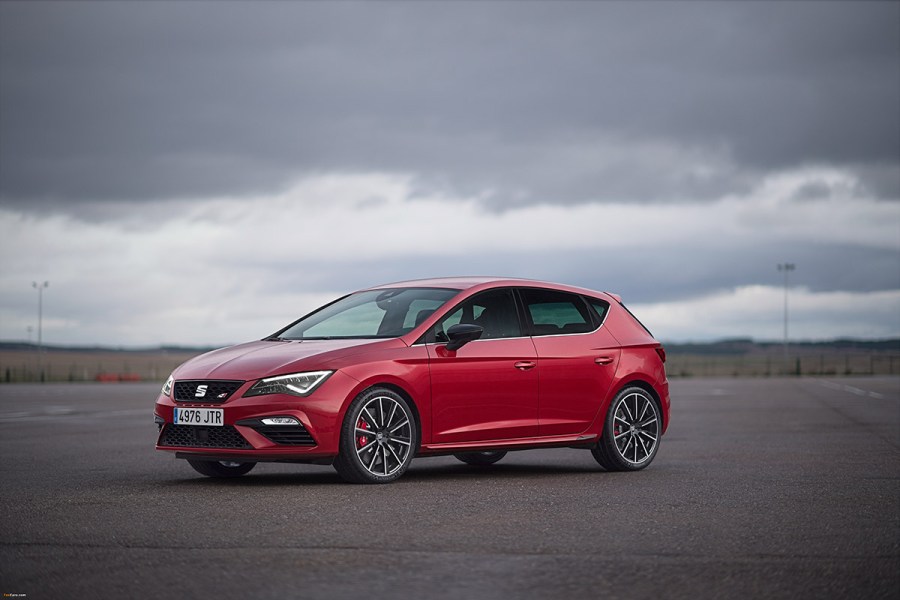
Seat Leon Cupra Mk3 Most Common Problems
Volkswagen cars of this era had a silica bag added to the coolant reservoir to make it last longer. The idea was great in principle but if this bag splits it’s a very expensive headache. The silica balls can block the heater matrix which requires a lot of disassembly to fix. If the heating inside the cab is weak and not getting hot, this could be a sign the silica bag has split. Models with this bag will say ‘Mit Silika’ on the coolant header tank. Before starting the engine, have a look to see if the bag is visible, if you can find it, fish it out and discard it to prevent any potential problems.
Another common coolant problem was a leaking thermostat and water pump module. Again, with the engine cold, check the coolant level, if it’s below minimum then it could be leaking. If there’s no visual indication of a leak, after a test drive see if it smells like coolant, this is another sign something is leaking.
Other frequent issues are par for the course with these types of cars. Clutch, bodywork and history files are all important elements to thoroughly check over. We’d always recommend a good test drive too, to make sure everything feels and sounds as it should.
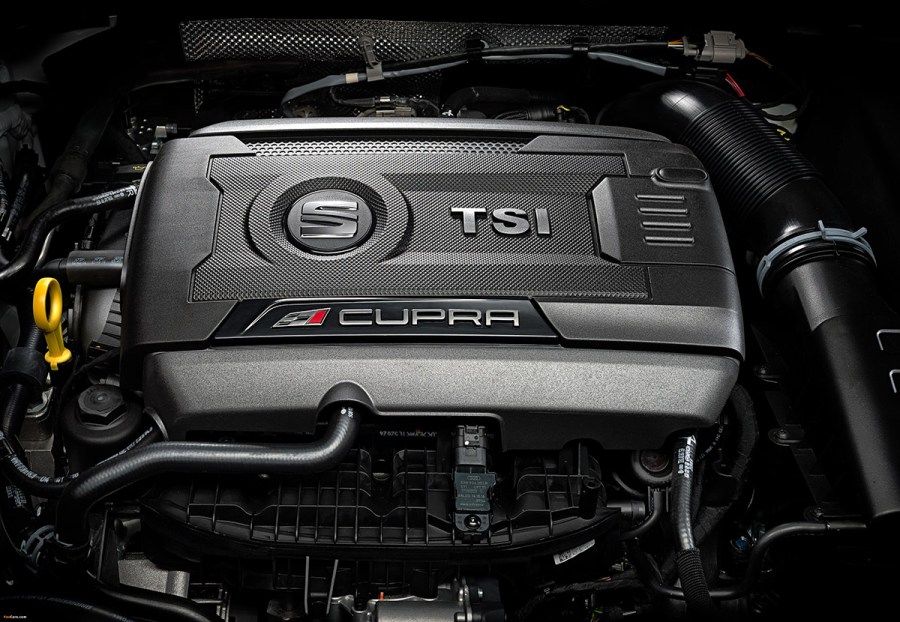
Key areas to look out for when buying a Seat Leon Cupra Mk3
Engine
The Mk3 Cupra saw five different power iterations from the same 2.0-liter TSI EA888 engine available throughout the generation. At launch, 265 and 280 versions were available with 261 and 276bhp respectively. It’s not hard to guess which one was the most popular at the time, so in 2015, the 265 was pulled and the 280 was replaced with the 290, packing 286bhp. A 296bhp version was introduced in 2017, called the Cupra 300 and the Cupra R got 306bhp from the EA888 engine. The same specifications as the VW Golf R Mk7, in fact.
Adding to its impressive sleeper status, the Cupra can offer surprisingly good fuel economy. Expect around 40mpg with fairly consistent driving and even with a lead foot it’ll stay in the 30s. To keep everything in good working order it’s advisable to use premium fuel.
The stock engines were pretty powerful for a hatchback but the Cupra has a lot of potential with a few tweaks. A Stage 1 remap can boost a 280 or 300 up to around 365bhp and a Stage 2 can get in touching distance of 400bhp with plenty of torque to back it up. Other components generally need uprating to withstand the power so look for accompanying history that details any upgrades. Also, it won’t necessarily be immediately obvious the car has been remapped so chat to the owner about any modifications they’ve done and look for different air intakes or filters.
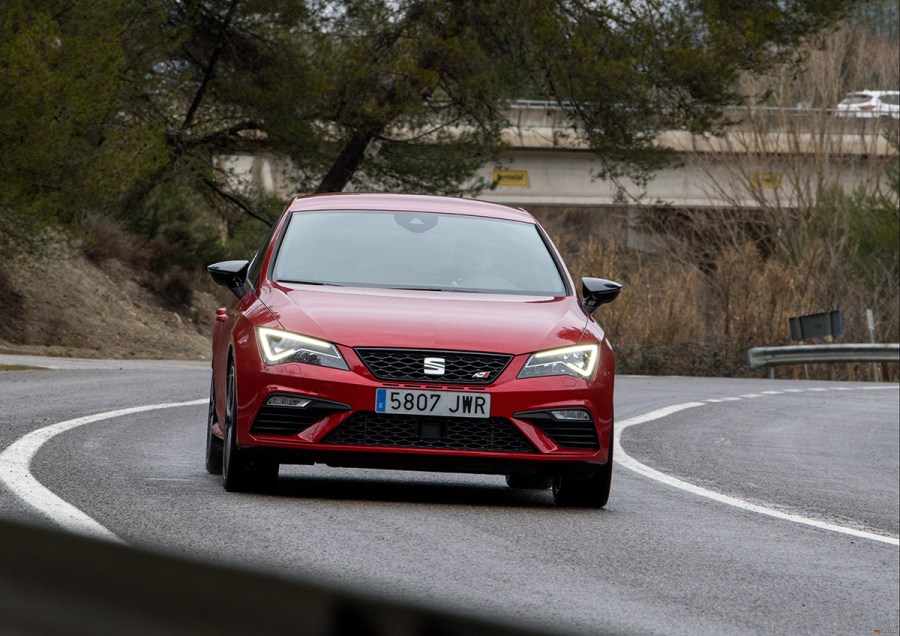
Transmission
The 265 was only available with a six-speed manual gearbox but the 280 had the option of a six-speed DSG automatic transmission. Following variants had the choice of manual or autos but the DSG transmission was far more popular, nearly three quarters of buyers went for this option.
As always, be mindful of any unusual clutch behavior during a test drive and for high mileage cars look for a new clutch in history documents. If it’s made it past the 50,000 mile mark then it might be time to budget for a clutch and it’s always worth opting for an uprated one if it’s affordable at the time. The mileage point for a new clutch can vary depending on previous use so if there’s relatively low mileage replacements in history files then the car could have had an overly enthusiastic owner.
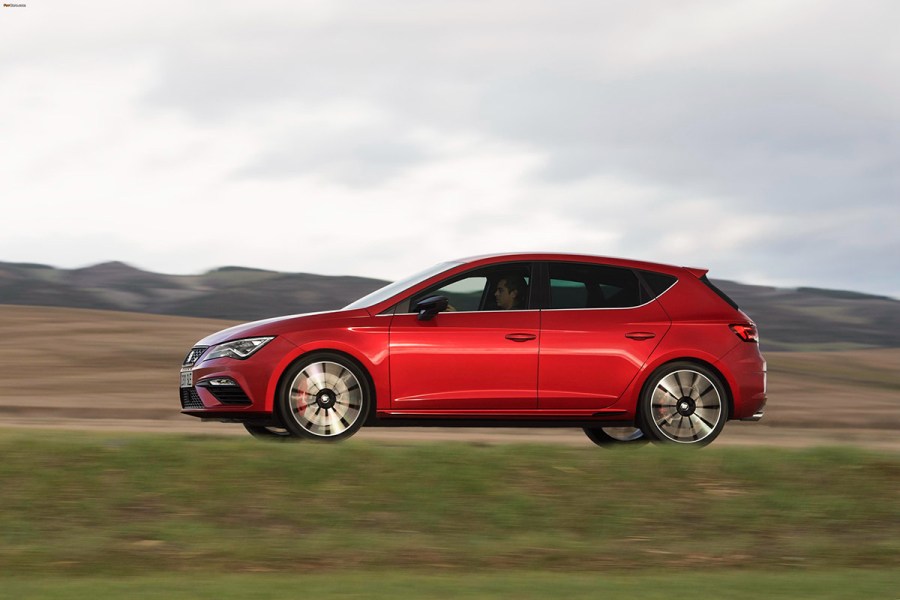
Chassis
Along with the Mk7 Golf the Cupra features the MQB chassis with multilink rear suspension. Compared to the standard Leon the Cupra set up is firmer and this can be adjusted using Cupra and Sport modes too. Dynamic Chassis Control (DCC) came as standard across the range to adapt the ride accordingly.
Like other Volkswagen group products, this model was fitted with progressive steering which firms up with speed to require less input to position the car. It also has a mechanical diff and as a front-wheel drive car it can eat through tires reasonably quickly, especially if it’s been on track.
The 300 estate version was available with a four-wheel drive set up which can eliminate any wheelspin the front-wheel drive configuration can experience under hard acceleration. It comes with launch control too but when these cars were under warranty there was a lot of debate about whether using it more than a handful of times would void a warranty by causing unnecessary wear to the clutch. Now they’re out of warranty periods, launch control is well worth trying but be prepared to fork out for a new clutch if it gets used regularly.
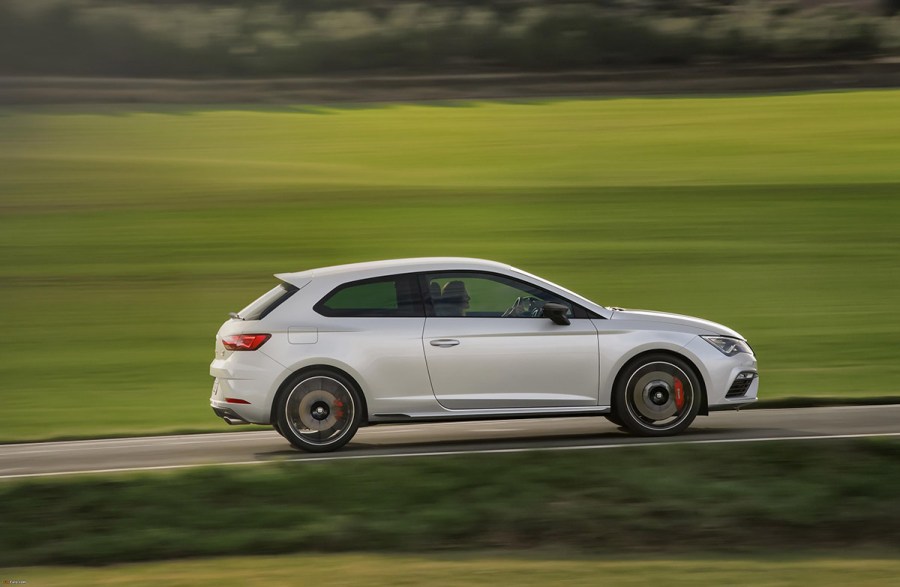
Seat Leon Cupra Mk3 Brakes
As stock, the Cupra had slightly larger single piece front brake discs at 340mm compared to the rear ones at 310mm. The Sub8 performance pack came with four-piston Brembo brake calipers and ventilated discs, which are more expensive to replace. Here, you’re looking to make sure that pads and discs wear evenly. It’s a good opportunity to ask the owner whether the car has been on track. If it has, when was the brake fluid changed and what rating is it. On track, you’re likely going to need dot 5.1 fluid or something suited to track driving. Similarly with the pads, stock pads are great on the road, but after a few laps around a track, can quite quickly suffer from fading.
On a test drive, feel how responsive the brakes are and listen out for any squealing, grinding, and crunching noises. If the car pulls towards one side under braking, this could be a sign there’s an imbalance in the brakes. It’s hard to put a set mileage on when brakes need replacing but look back over the vehicle’s history to see if any brake disc and caliper replacements pop up and how frequently. It’s also important to note that some brake pads squeak when cold, particularly those geared for track use. So don’t always assums there’s an issue with brakes if you do hear some squealing, but do ask what brake pads are fitted.
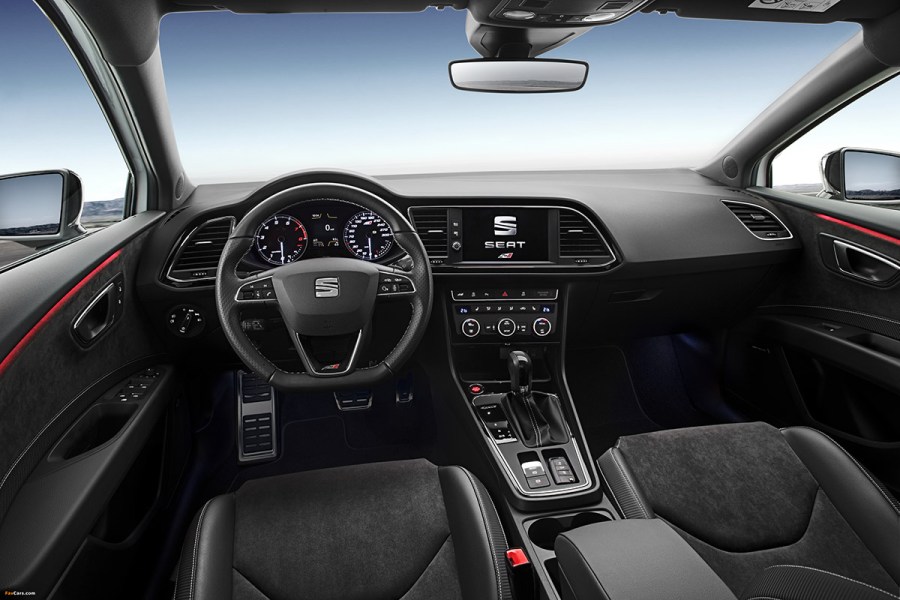
Interior
Inside, the interior is laid out well and the central infotainment screen is integrated into the dash rather than sitting awkwardly on top. Early Mk3 examples have a 6.5-inch touch screen and from 2018 the screen grew to 8-inches. Around this time the instrument cluster switched to a digital display. This also coincided with white interior trim details changing for carbon fiber highlights and piano black panels around the gear shift.
With each successive Leon Cupra generation the wheelbase has grown to offer more space in the back for passengers. If this car is likely to double as a family car or be used regularly with rear passengers, no one should feel cramped in the back. The seats fold down in a 60/40 split and a ski hatch through the middle seat can accommodate long items without faffing around with folding seats.
The seats have quite big bolsters which is great for holding you tight around fast corners but they’re extremely prone to wear. The driver’s side will always be the worst culprit, particularly on pre-2018 models with white leather seat details, these can crack and form holes over time. If the listing skips over driver’s seat pictures then this could mean the bolsters look a bit unsightly. It shouldn’t be too much of a hassle to get fixed but it’s a common place to find wear regardless of age or mileage.
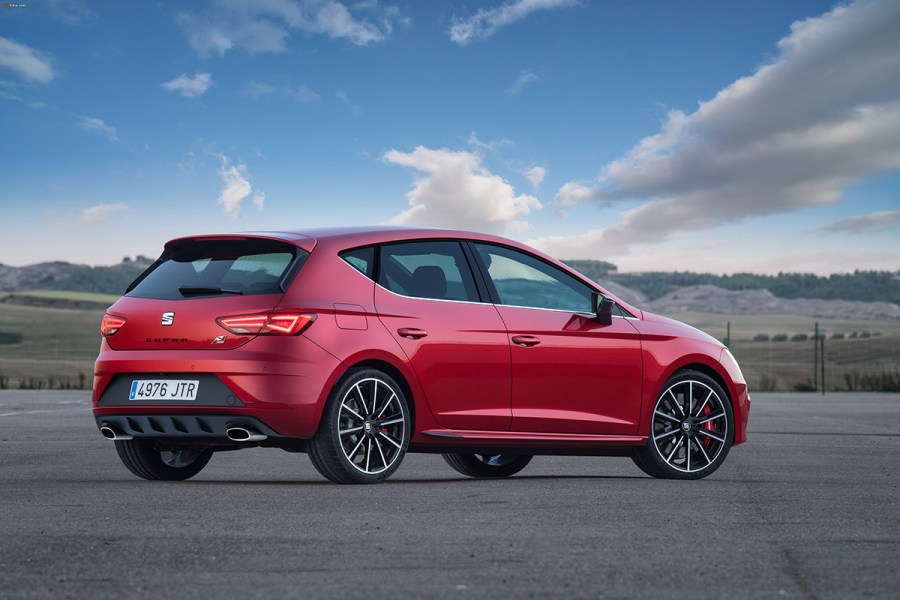
Wheels
The vast majority of Cupras will be fitted with 19-inch wheels, the 265 model was the only one to get 18-inch alloys. Some examples will have multiwheels or racing style wheels featured with the Sub8 package. These lighter wheels are prone to cracking which isn’t always obvious from a visual inspection. Cracks tend to pop up on the inside of the wheel so the earliest indicator of this will be tire pressure monitoring warnings showing a loss of pressure. Frequent warnings could be a sign that a wheel has cracked. In some situations these can be welded and repaired but welded wheels can also fail later on.
Body
As well as the usual bodywork checks for obvious signs of damage, there’s a few ways to study the condition of a Cupra. When the hood is lifted the inner wings are visible and these are date stamped. The date should match the year of production, generally a few months before the car was registered. If the date is newer or covered then this could indicate the vehicle was damaged and needed the wing replacing. For the outer wings, if one appears cleaner than the other then this could be another sign bodywork was replaced.
All around the car and under the engine bay, keep an eye out for overspray. This is a particularly good trick for white cars but it might be harder to detect on black cars. Also, with the hood up, run your hand along the edge closest to the windscreen, if it feels rough this could be a sign of a respray.
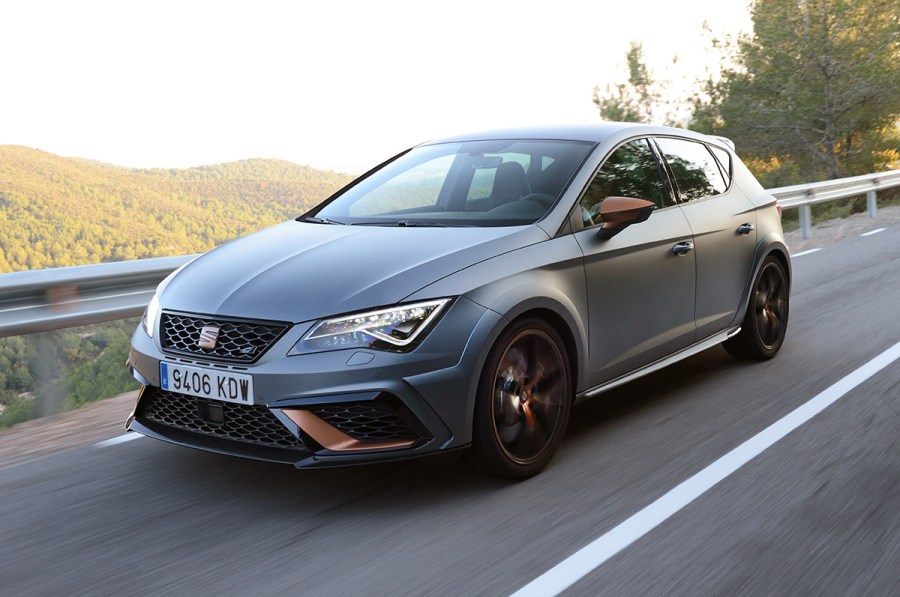
Seat Leon Cupra Mk3 Special Editions
The Sub8 performance pack was launched in 2014 to replicate the equipment fitted to a Leon Cupra that lapped the Nordschleife in under eight minutes. Externally, it had side skirts, lightweight wheels and Brembo brakes and Michelin Pilot Sport Cup 2 tires were an optional extra. In 2015 the Ultimate Sub8 pack was released which featured a weight saving design that got rid of the center armrest, put a smaller heater in, deleted four speakers from the standard eight and did away with any unnecessary frills.
The Leon Cupra R came next which was a run of 799 units based on the 300 model. The R had 306bhp and for the UK market just 24 right hand drive examples were made, making them extremely rare. RHD examples were only manual but LHD versions came with an automatic gearbox as an option. Distinguishing it from the rest of the Cupra lineup, the R had new bumpers with large front intakes, sideskirts, carbon fiber front splitter, rear diffuser, spoiler and copper colored badging.
In 2018 the Leon Cupra ST 300 Carbon Edition was launched and 50 examples ended up in the UK. Carbon fiber lovers, this is the one for you. As the name suggests, it received a carbon fiber makeover for the front and rear diffusers and side blades, complemented by black and silver alloy wheels. The only paintwork option was Monsoon Grey so it’s got all the moody vibes.
The last special edition for the Mk3 was launched in 2019, the Leon Cupra R ST. The estate car had 345bhp and copper exterior accents as well as carbon fiber features. Four-wheel drive and a seven-speed automatic transmission were standard and it came with Brembo brakes and quad exhausts.
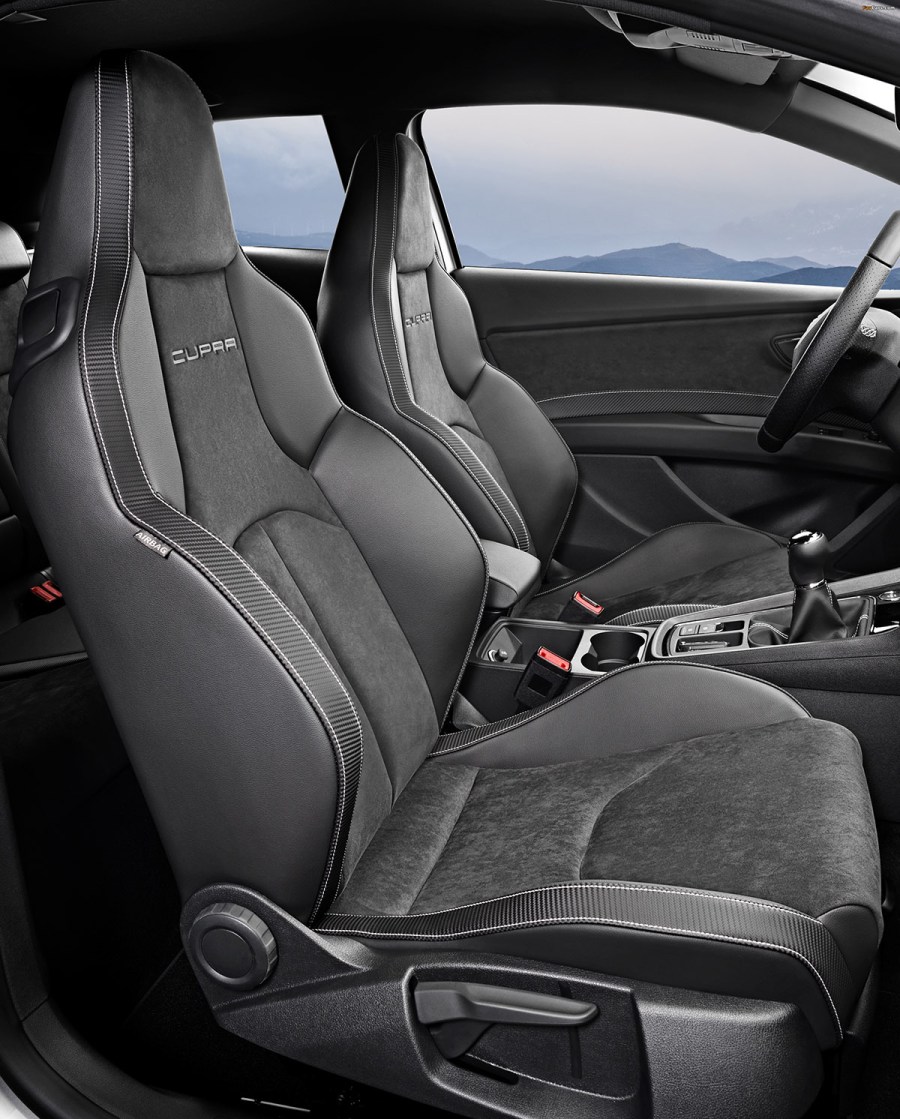
How much should I pay for a Seat Leon Cupra Mk3?
Seat has never been sold in the US and given import laws restrict cars under 25 years old, you’ll need to move countries to get your hands on a Mk3 Leon Cupra this decade. As for UK prices, it all depends on age, condition, mileage and history.
£8,000 to £14,000: This is the sweet spot to get you into a 280 model. At the lower end cars will typically have around 100,000 miles or accident damage history. For higher mileage cars, make sure to have a good comb through service history to gauge what might need replacing soon and factor that into the budget.
£14,000 to £20,000: At this price bracket, the market opens up to the 290 and 300. Again, cheaper 300s might have accident damage but there’s plenty of sound examples available for this money. Obviously the closer to £20k the better condition vehicles are generally in, with fewer miles on the clock, so this price bracket has a good range of options.
£20,000-plus: If the budget will stretch to it the Cupra R ST starts from around £26,000 for a 30,000 mile example. The reasonably high price is driven by the fact they’re hard to come by and they’re still quite new so give it a few more years and they might get a bit more affordable.
Want to get more performance from your new purchase? Check out our SEAT Leon Cupra Mk3 tuning guide.

